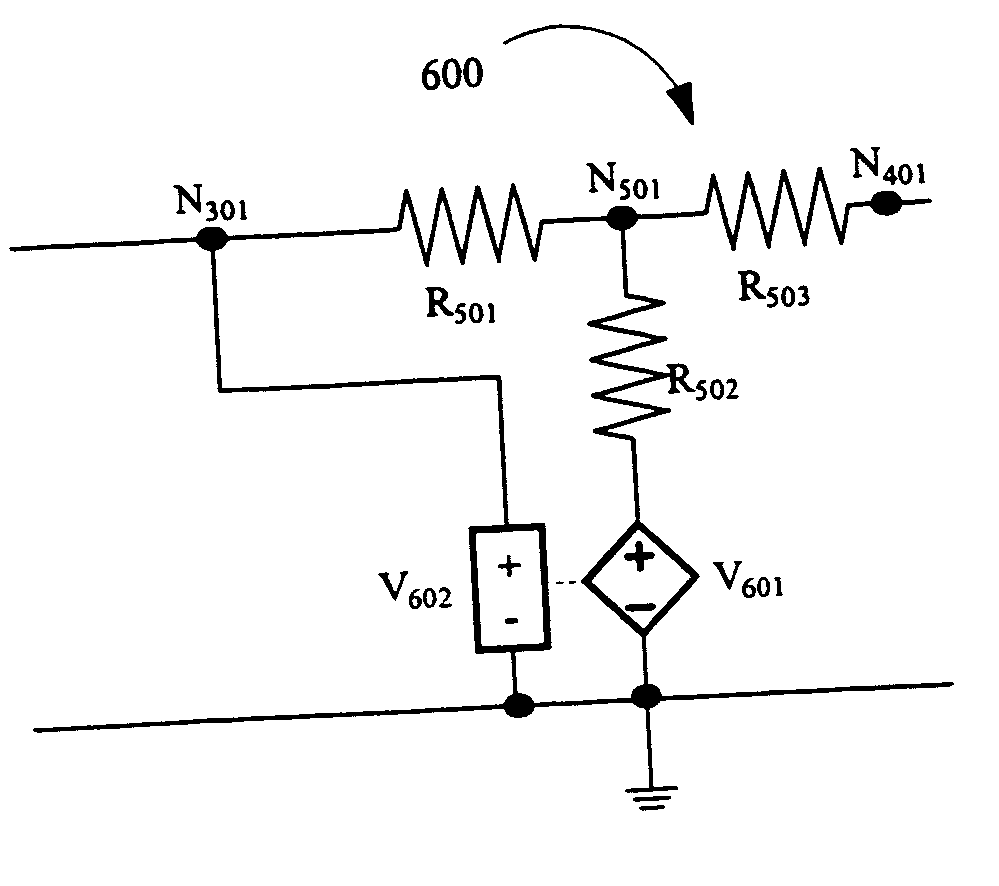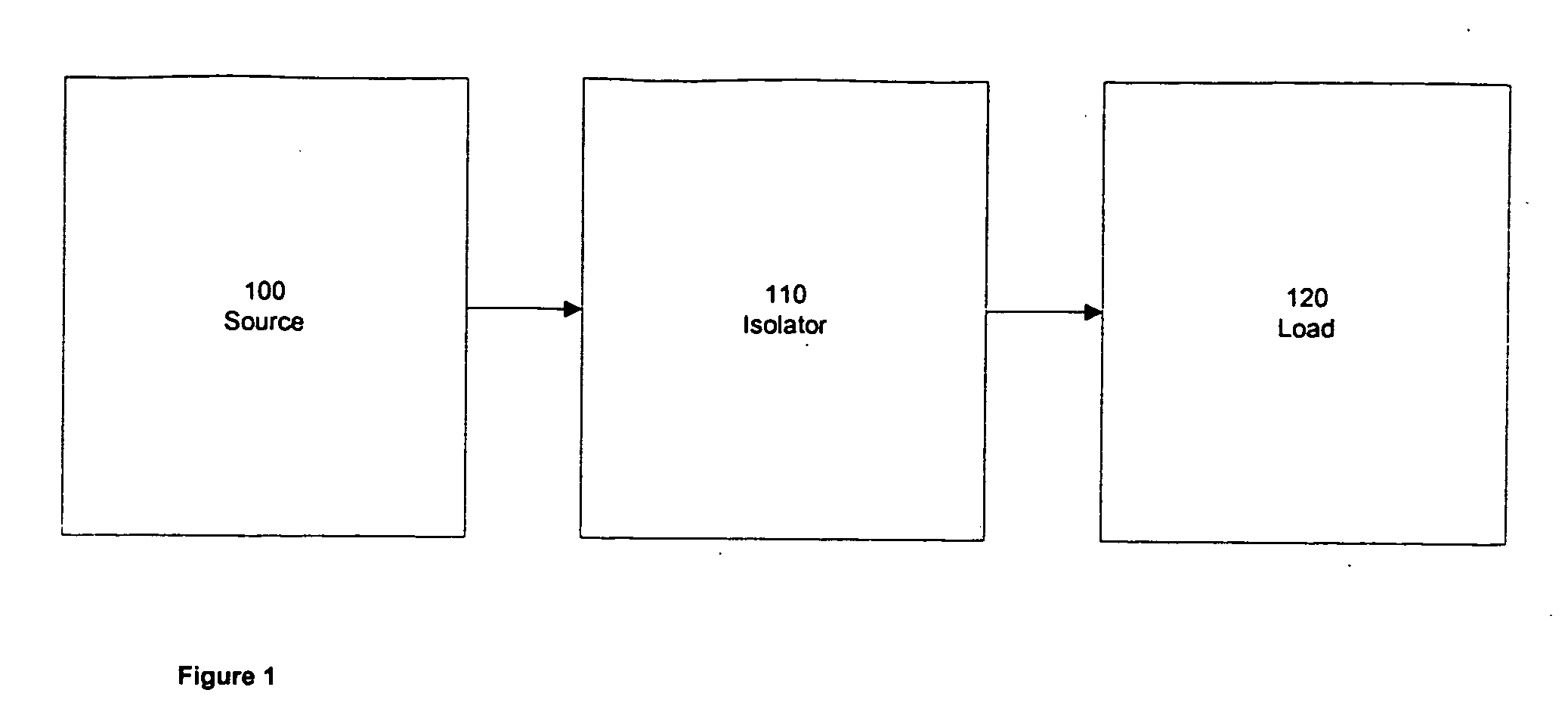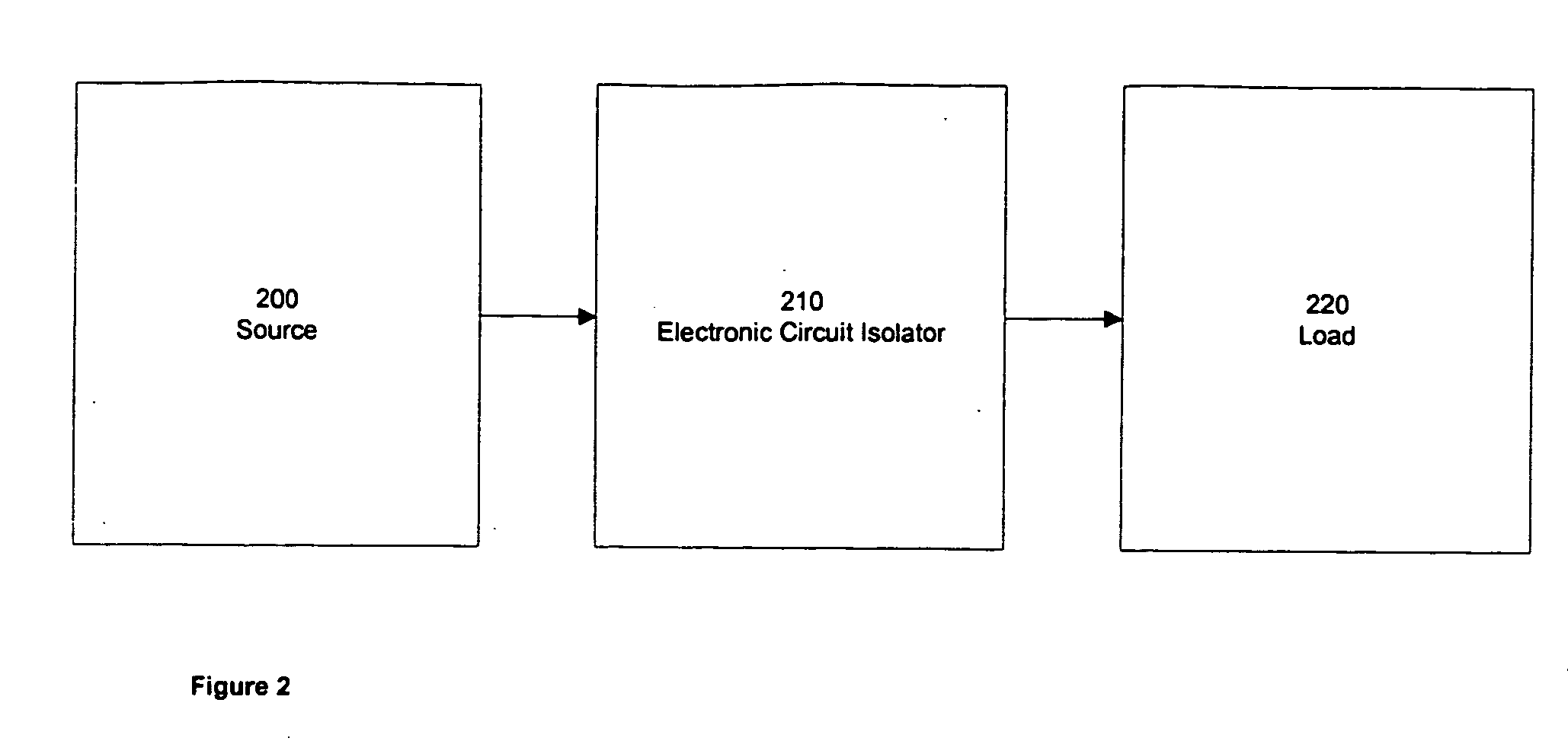Electronic isolator
a technology of isolators and electrical signals, applied in the field of electronic isolators, can solve the problems of low signal attenuation, large cost, and large size of relatively narrow band devices (10%-20% being typical), and achieve the effects of high signal attenuation, low signal attenuation, and high asymmetric attenuation of electrical signals
- Summary
- Abstract
- Description
- Claims
- Application Information
AI Technical Summary
Benefits of technology
Problems solved by technology
Method used
Image
Examples
Embodiment Construction
[0035] The present invention is directed to an electronic isolator. In the following description, numerous specific details are set forth to provide a more thorough description of embodiments of the invention. It is apparent, however, to one skilled in the art, that the invention may be practiced without these specific details. In other instances, well known features have not been described in detail so as not to obscure the invention.
[0036] The present invention enables electronic circuit designers to realize the classic isolation function with an electronic circuit design as opposed to a non-linear physical process. This invention differentiates the source signal from the source signal plus noise reflected from the load. This noise may include out-of-phase source signal or harmonic distortion induced by a nonlinear device such as a diode or transistor. This invention uses no magnets or magnetic materials. It is not wavelength sensitive and as such is wideband with no significant ...
PUM
 Login to View More
Login to View More Abstract
Description
Claims
Application Information
 Login to View More
Login to View More - R&D
- Intellectual Property
- Life Sciences
- Materials
- Tech Scout
- Unparalleled Data Quality
- Higher Quality Content
- 60% Fewer Hallucinations
Browse by: Latest US Patents, China's latest patents, Technical Efficacy Thesaurus, Application Domain, Technology Topic, Popular Technical Reports.
© 2025 PatSnap. All rights reserved.Legal|Privacy policy|Modern Slavery Act Transparency Statement|Sitemap|About US| Contact US: help@patsnap.com



